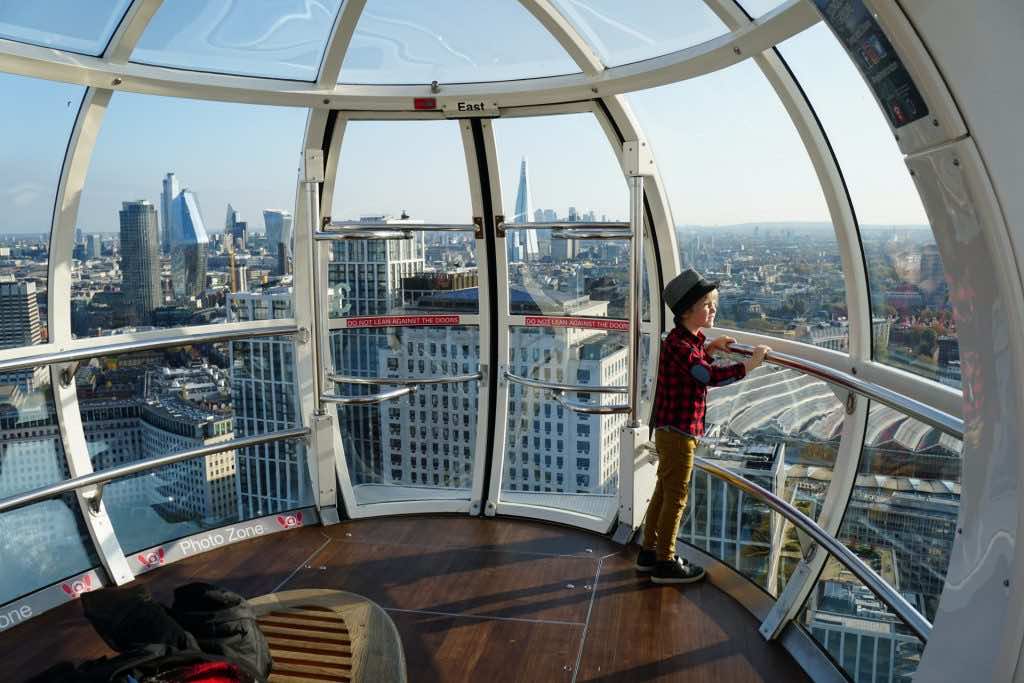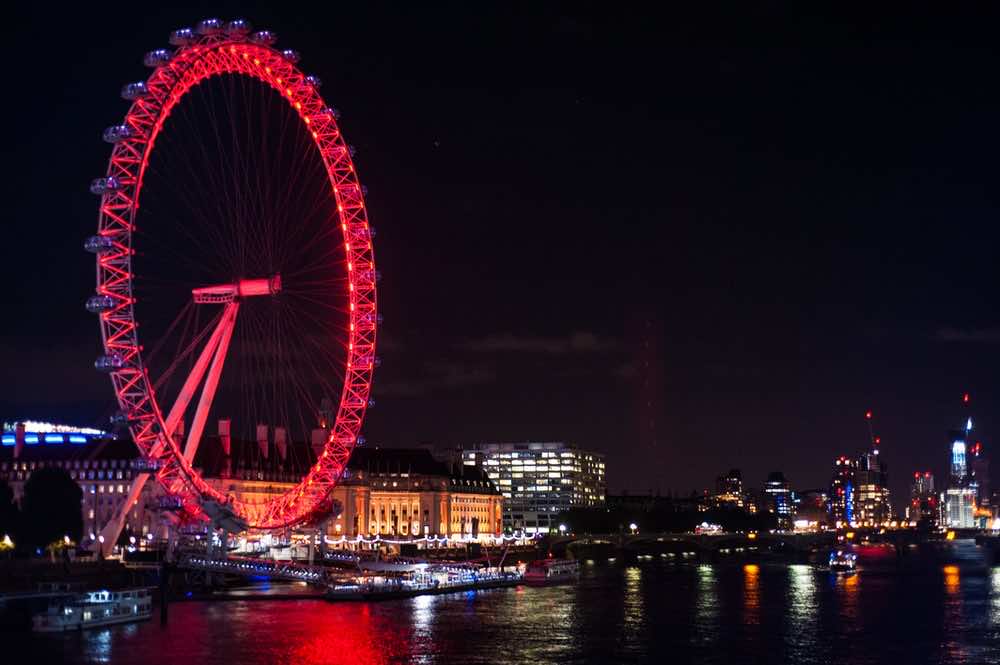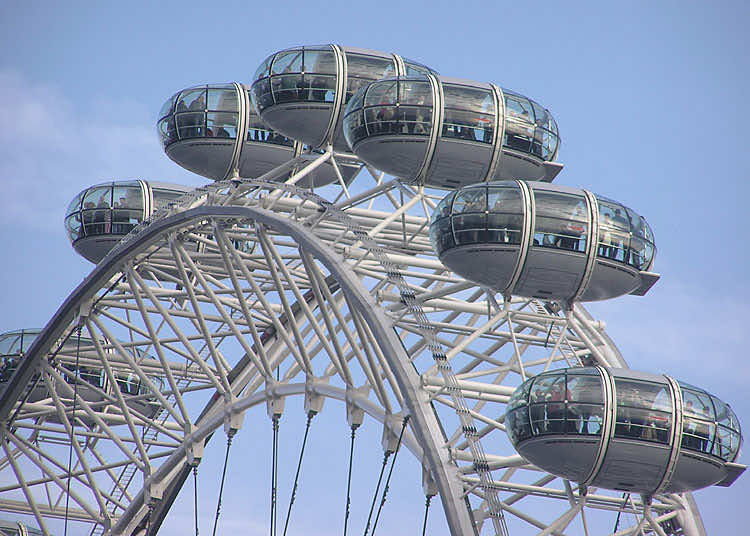The London Eye, or the Millennium Wheel, is a cantilevered observation wheel located on the South Bank of the River Thames in London. Completed in 1999, it was built as a part of Britain’s millennium celebrations. It is perhaps the world’s most recognizable observation, or Ferris, wheel and is Europe’s tallest cantilevered observation wheel.

It is 135 meters tall with a wheel circumference of 424 meters and until 2006 was the tallest observation wheel in the world. The capsules of the London Eye are numbered from 1 to 33, even though there are actually only 32 capsules. For superstitious reasons, number 13 is missing. Each capsule represents one of the city’s boroughs, weighs 10 tons and can hold 25 people: That’s 800 people in total. The wheel takes about 30 minutes to finish one complete rotation moving at a speed of 0.9 km (or 0.6 miles) per hour. The London Eye offers sweeping 360 degree panoramic views, which on a clear day allow a visitor to see as far as the Windsor Castle, about 40 miles away. The London Eye also holds the distinction of being the most popular paid tourist attraction in the United Kingdom with over 3 million visitors annually.

The husband-and-wife team of Julia Barfield and David Marks of Marks Barfield Architects designed the London Eye. Its construction involved elements and components from all over Europe, the steel was supplied from the UK and fabricated in The Netherlands by the Dutch company Hollandia, the cables came from Italy, the bearings came from Germany (FAG/Schaeffler Group), the spindle and hub were cast in the Czech Republic, the capsules were made by Poma in France (and the glass for these came from Italy), and the electrical components from the UK.
The wheel was constructed lying horizontally on the ground in multiple different sections that were transported on the River Thames before being assembled together on site and lifted up. At the time it was the heaviest structure to have been constructed in that manner.



